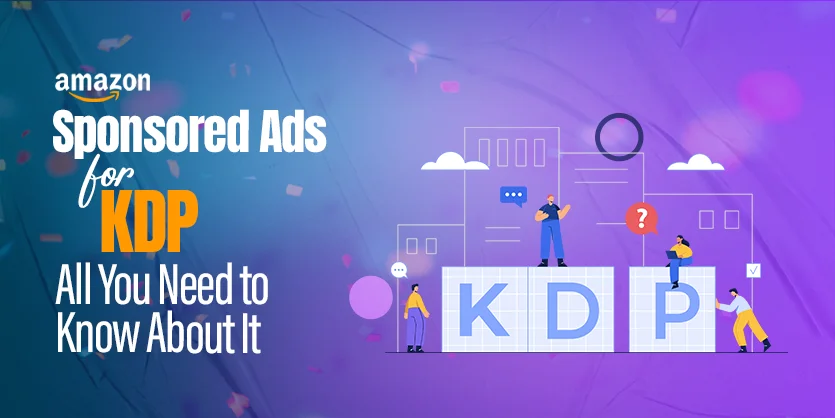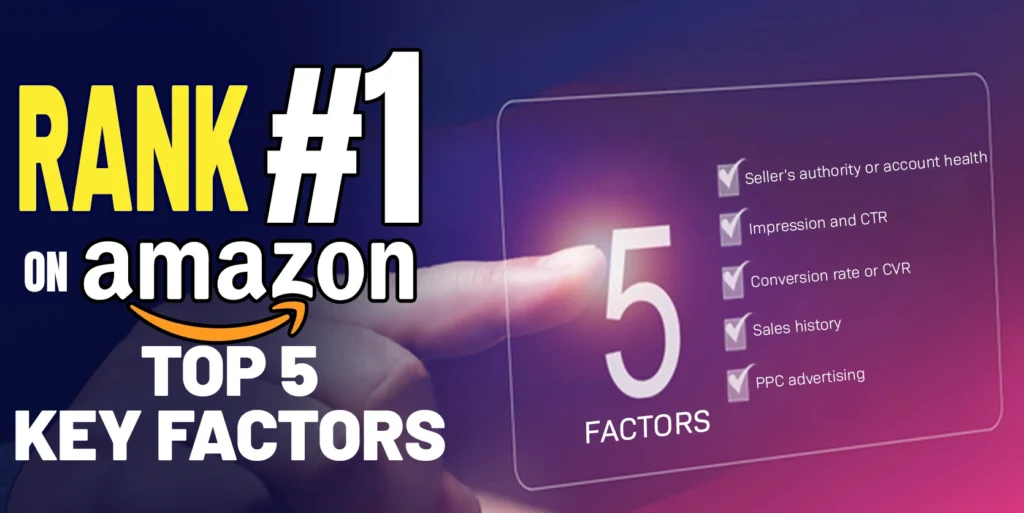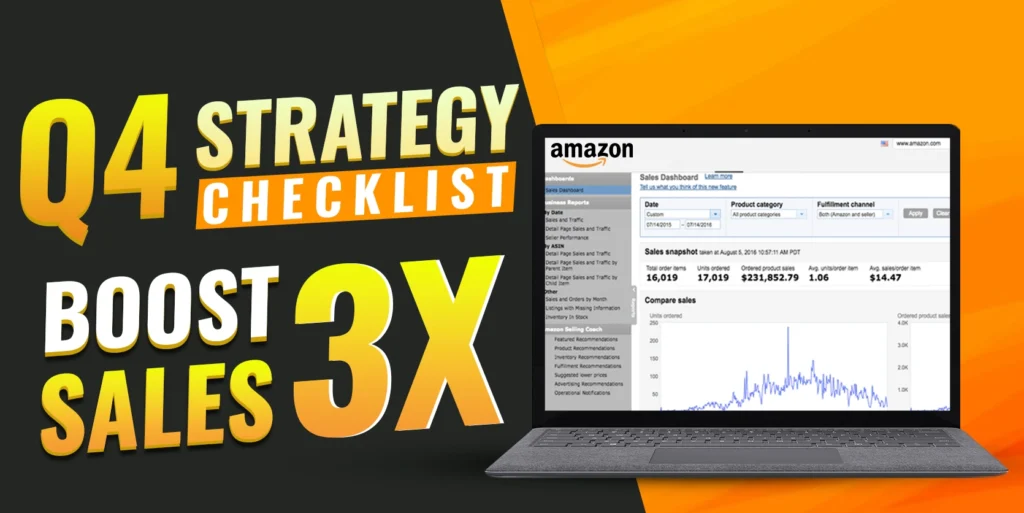If you are an author or a publisher who is looking to increase your book’s visibility on Amazon, then this is the perfect guide for you. Amazon Sponsored Ads for KDP serves as an advertising platform exclusively designed for self-published authors who aim to expand their book’s reach among a broader audience on Amazon. By utilizing various targeting features like keywords, interests, and product categories, authors can enhance their effectiveness in reaching potential readers and boosting sales. Since it was launched in 2021, Amazon Sponsored Ads for KDP has gained significant popularity among self-published authors seeking to enhance their book’s visibility on the Amazon platform.
So, whether you’re a new author looking to promote your first book or an experienced publisher looking to improve your marketing strategy, this blog is for you to explore the world of Amazon Sponsored Ads for KDP!
Table Of Contents
- What is KDP Advertising?
- Is It Worth Advertising KDP on Amazon?
- Key Metrics and Calculations
- What are Your KDP Advertising Objectives?
- Different Campaign/Advertising Types
- Different Targeting Types
- How to Optimize Your KDP Advertising?
- Additional Tips
- Insights
What is KDP Advertising?
KDP Advertising, short for Kindle Direct Publishing Advertising, is a self-service advertising platform designed for authors and publishers to promote their Kindle eBooks to a specific audience on Amazon.com.
This platform enables authors to create sponsored ads that appear in search results and product detail pages on Amazon.com. By utilizing targeted keywords, categories, or products, authors can effectively reach potential readers actively searching for books in their genre or topic.
Operating on a pay-per-click (PPC) model, KDP Advertising ensures that authors are only charged when someone clicks on their ad. The cost per click (CPC) varies depending on the competition for the selected keywords or products. To manage their advertising expenses, authors have the option to set a daily budget.
Is It Worth Advertising KDP on Amazon?
The worthiness of advertising KDP on Amazon depends on your specific goals and budget. While KDP Advertising can enhance visibility, sales, and royalties, it can become expensive if not effectively optimized. To evaluate if investing in KDP Advertising is worthwhile, it is crucial to calculate your break-even ACoS (Advertising Cost of Sale), all fees and cost, and define your specific objectives for KDP Advertising.
This positive feedback loop is also called the “FlyWheel” effect. Using KDP advertising is an excellent way to start “spinning this flywheel”.
The flywheel effect as explained:
- Impression and Clicks to your book
- Clicks = Sales
- Increased sales improve your keyword ranking
- A higher ranking will mean higher sales
- Higher sales will increase your reviews
- More reviews = Higher conversion rate
- Higher conversation = Higher Rankings = In Sales
- Flywheel repeats
Key Metrics and Calculations
To optimise your KDP Advertising campaign, it is essential to grasp the fundamental metrics and calculations involved. The primary metrics to consider include Impressions, Clicks, Click-Through Rate (CTR), Spends, Sales, and ACoS (Advertising Cost of Sale). ACoS, specifically, plays a pivotal role in assessing the profitability of your campaign by measuring the ratio of ad spend to sales. To optimise your campaign’s performance, it is crucial to closely monitor and make necessary adjustments to your bids, keywords, and targeting strategies based on these metrics.
In this section, we will deep dive into the different metrics involved in KDP Advertising.
- Impressions: The number of times your ad has been shown on Amazon.
- Clicks: The number of times users have clicked on your ad.
- Click-Through Rate (CTR): The percentage of users who clicked on your ad after seeing it. It is calculated by dividing clicks by impressions.
- Average Cost-Per-Click (CPC): The average cost of each click on your ad. It is calculated by dividing the total ad spend by the number of clicks.
- Advertising Cost of Sales (ACoS): The ratio of ad spend to sales generated from the ad. It is calculated by dividing total ad spend by total sales.
- Breakeven ACoS: The ACoS at which the generated revenue from the ad matches the cost of the ad itself. This can be determined by dividing the book’s cost by the royalty percentage and multiplying the outcome by 100.
- KENP Royalties: The royalties earned from KENP Reads of your book. It is calculated based on the KENP rate and the number of KENP pages read.
- KENP Reads: The number of KENP pages read for your book through the KDP Select Global Fund.
- KENP Revised ACoS %: The ACoS that considers the KENP Royalties earned from KENP Reads. It is calculated by dividing the total ad spend by the total sales plus the KENP Royalties earned and multiplying the result by 100.
What are Your KDP Advertising Objectives?
The objectives you set for your KDP Advertising campaign rely on your specific goals and budget. These objectives may include enhancing visibility, boosting sales, or increasing royalties. To establish these objectives, it is crucial to gain a thorough understanding of your target audience, competition, and relevant keywords. Subsequently, you can create different campaigns tailored to your specific objectives, such as utilizing Sponsored Products or Product Display Ads. Amazon-sponsored ads help to increase sales.
The following are the potential objectives for your KDP Advertising campaigns:
- Building an author’s brand ➡ ACoS > Breakeven ACoS
- Building a book series brand ➡ ACoS > Breakeven ACoS
- Ranking for Keywords ➡ ACoS > Breakeven ACoS
- Taking sales from competition ➡ ACoS > Breakeven ACoS
- Increase Sales ➡ ACoS > Breakeven ACoS
- Increase and scale your royalties ➡ ACoS <= Breakeven ACoS
Also, any top-of-the-funnel activities such as brand-building advertising objectives will normally result in a relatively higher ACoS.
Different Campaign/Advertising Types
KDP Advertising has 3 main campaign/advertising type options when you first create a campaign.
- Sponsored Products Ads:
Sponsored Products Ads are advertisements specifically targeted by keywords, and they are displayed in search results and on product detail pages on Amazon. These ads effectively enhance your book’s exposure to potential readers actively searching for books in the same genre or category. Sponsored Products Ads operate on a pay-per-click model, meaning you are charged only when a reader clicks on your ad.
- Product Brand Ads:
Product Display Ads, similar to Sponsored Products Ads, are designed to target specific keywords. However, they differ in terms of ad placement, as Product Display Ads are displayed on the detail pages of other products that are related to yours. This form of advertising is particularly effective in reaching readers who have an interest in books similar to yours. Like Sponsored Products Ads, Product Display Ads operate on a pay-per-click basis, ensuring that you are only charged when a reader clicks on your ad.
- Lock Screen Ads:
Lock Screen Ads are promotional advertisements that are presented on Kindle e-readers and Fire tablets when the device is locked. These ads are showcased through full-screen images, allowing readers to swipe and view additional content. Lock Screen Ads have the capability to target specific genres and interests, making them an effective means to connect with potential readers who may have otherwise missed out on discovering your book.
Different Targeting Types
Amazon KDP (Kindle Direct Publishing) offers several targeting options for authors and publishers to promote and advertise their books. Here are the main targeting types:
- Interest Targeting:
This specific targeting option enables you to select your desired audience based on their interests, which are determined by Amazon’s algorithms. You have the flexibility to choose up to 10 relevant interests that accurately describe your target audience.
- Product Targeting:
By utilizing product targeting, you have the ability to handpick specific products or categories that are relevant to your book. Subsequently, your advertisements will be displayed to customers who are actively browsing through those particular products or categories.
- Automatic Targeting:
With automatic targeting, Amazon’s algorithms will determine the most relevant audience for your book based on factors like keywords, categories, and more.
- Manual Targeting:
This targeting type allows you to choose your audience based on specific keywords, categories, or ASINs (Amazon Standard Identification Numbers) that are relevant to your book. In the meantime, you need to know about your product ranking. Once your product is ranked it will increase sales potentiality.
- Customer Interest Targeting:
This targeting method is exclusively accessible for Sponsored Display ads. It grants you the ability to engage customers who have demonstrated interest in products similar to yours, drawing from their browsing history.
By leveraging these targeting options, you can effectively reach your intended audience and enhance the visibility and sales of your book on Amazon.
How to Optimize Your KDP Advertising
KDP (Kindle Direct Publishing) advertising is a powerful tool for self-published authors to promote their books on Amazon. To maximize the effectiveness of your KDP advertising, consider implementing the following suggestions:
- Know your audience: Before you start advertising, make sure you know your target audience. Who is your ideal reader? What kind of books do they like? What keywords would they search for when looking for a book like yours?
- Choose the right keywords: Keywords are the specific words or phrases employed by readers when searching for books on Amazon. It is vital to meticulously choose the right keywords to target in your advertisements. Utilize Amazon’s Keyword Research tool to identify relevant keywords that possess a high search volume but face low competition.
- Create compelling ad copy: Ensure that your ad copy captures attention and provides valuable information. Clearly convey the essence of your book and persuade readers why they should choose it. Utilize a language that resonates with your target audience and emphasizes the unique selling points of your book.
- Set your budget wisely: Determine a suitable advertising budget based on your financial capacity. Begin with a modest budget and gradually increase it as you observe positive outcomes.
- Monitor your ads: Regularly monitor the performance of your ads and make necessary adjustments. Fine-tune your keywords, ad copy, and budget to enhance your return on investment (ROI).
- Test different ad formats: Take advantage of the various ad formats available through KDP, such as Sponsored Products and Sponsored Brands. Experiment with different formats to identify the ones that yield the best results for your book.
- Use data to inform your decisions: Leverage the data collected from your ad campaigns to make informed decisions. Pay close attention to metrics like click-through rate (CTR), conversion rate, and cost per click (CPC) to optimize your ads and improve your ROI.
Additional Tips:
Kindle Daily Deal: The Kindle Daily Deal is a promotion offered by Amazon where they feature discounted Kindle books on their homepage. If your book is selected for the Kindle Daily Deal, it can significantly increase sales.
Amazon Author Central: Amazon Author Central is a free service that allows you to create an author page on Amazon. You can use your author page to promote your book and engage with your readers.
Insights:
KDP (Kindle Direct Publishing) is a highly effective self-publishing platform that empowers authors to easily publish their books and make them accessible to a global audience. With its user-friendly interface, comprehensive publishing tools, and diverse distribution options, KDP has emerged as a preferred choice for authors, both new and established.
Although the process of self-publishing on KDP may initially appear challenging, authors can achieve success by conducting research and investing effort into publishing and marketing their books to reach a broader readership. Key focal points for authors include producing high-quality content, optimizing book metadata and keywords, and employing effective marketing strategies to maximize the book’s potential.
Overall, KDP provides authors with a valuable opportunity to take charge of their publishing journey, connect with readers worldwide, and potentially generate significant income from their books.
We trust that this article has provided helpful insights. Should you have any further inquiries about KDP, please don’t hesitate to leave a comment below. Our team is always available to assist you with any e-commerce-related solutions.
For more information on Amazon Sponsored Ads for KDP, please feel free to email us your queries at info@ecomclips.com



